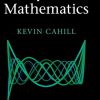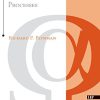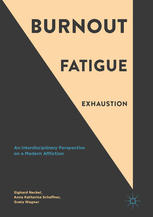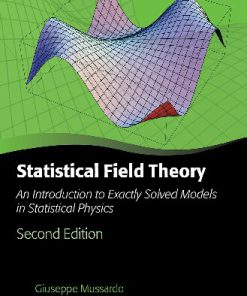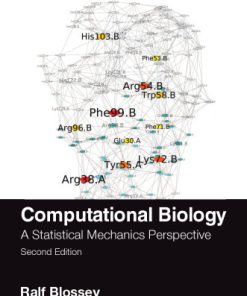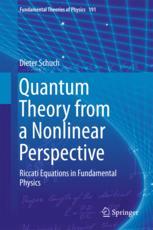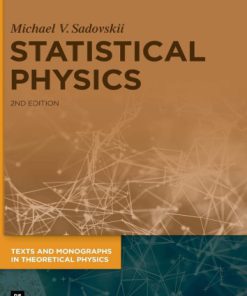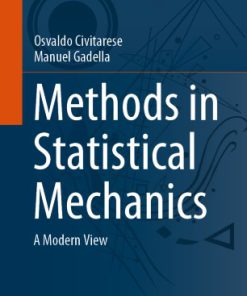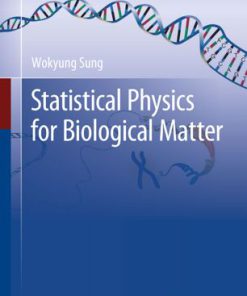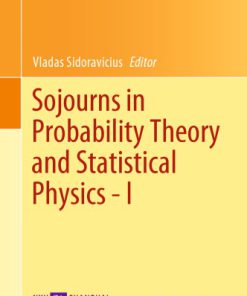Nonequilibrium Statistical Physics A Modern Perspective 1st Edition by Roberto Livi, Paolo Politi 1108365086 9781108365086
$50.00 Original price was: $50.00.$25.00Current price is: $25.00.
Nonequilibrium Statistical Physics A Modern Perspective 1st Edition by Roberto Livi, Paolo Politi – Ebook PDF Instant Download/DeliveryISBN: 1108365086, 9781108365086
Full download Nonequilibrium Statistical Physics A Modern Perspective 1st Edition after payment.
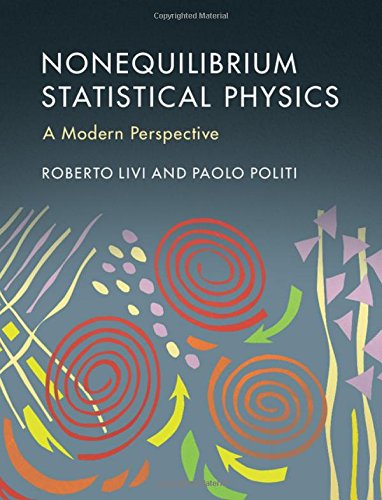
Product details:
ISBN-10 : 1108365086
ISBN-13 : 9781108365086
Author: Roberto Livi, Paolo Politi
Statistical mechanics has been proven to be successful at describing physical systems at thermodynamic equilibrium. Since most natural phenomena occur in nonequilibrium conditions, the present challenge is to find suitable physical approaches for such conditions: this book provides a pedagogical pathway that explores various perspectives. The use of clear language, and explanatory figures and diagrams to describe models, simulations and experimental findings makes the book a valuable resource for undergraduate and graduate students, and also for lecturers organizing teaching at varying levels of experience in the field. Written in three parts, it covers basic and traditional concepts of nonequilibrium physics, modern aspects concerning nonequilibrium phase transitions, and application-orientated topics from a modern perspective. A broad range of topics is covered, including Langevin equations, Levy processes, directed percolation, kinetic roughening and pattern formation.
Nonequilibrium Statistical Physics A Modern Perspective 1st table of contents:
1 Brownian Motion, Langevin and Fokker–Planck Equations
1.1 Introduction
1.2 Kinetic Theory
1.2.1 The Ideal Gas
1.2.2 Random Walk: A Basic Model of Diffusion
1.3 Transport Phenomena
1.4 Brownian Motion
1.4.1 The Langevin Equation for the Brownian Particle
1.4.2 The Fokker–Planck Equation for the Brownian Particle
1.5 Discrete Time Stochastic Processes
1.5.1 Markov Chains
1.5.2 Useful Examples of Markov Chains
1.5.3 Ergodic Markov Chains
1.5.4 Master Equation and Detailed Balance
1.5.5 Monte Carlo Method
1.6 Continuous Time Stochastic Processes
1.6.1 Stochastic Differential Equations
1.6.2 General Fokker–Planck Equation
1.6.3 Physical Applications of the Fokker–Planck Equation
1.6.4 A Different Pathway to the Fokker–Planck Equation
1.6.5 The Langevin Equation and Detailed Balance
1.7 Generalized Random Walks
1.7.1 Continuous Time Random Walk
1.7.2 Lévy Walks
1.8 Bibliographic Notes
2 Linear Response Theory and Transport Phenomena
2.1 Introduction
2.2 The Kubo Formula for the Brownian Particle
2.3 Generalized Brownian Motion
2.4 Linear Response to a Constant Force
2.4.1 Linear Response and Fluctuation–Dissipation Relations
2.4.2 Work Done by a Time-Dependent Field
2.4.3 Simple Applications of Linear Response Theory
2.5 Hydrodynamics and the Green–Kubo Relation
2.6 Generalized Linear Response Function
2.6.1 Onsager Regression Relation and Time Reversal
2.7 Entropy Production, Fluxes, and Thermodynamic Forces
2.7.1 Nonequilibrium Conditions between Macroscopic Systems
2.7.2 Phenomenological Equations
2.7.3 Variational Principle
2.7.4 Nonequilibrium Conditions in a Continous System
2.8 Physical Applications of Onsager Reciprocity Relations
2.8.1 Coupled Transport of Neutral Particles
2.8.2 Onsager Theorem and Transport of Charged Particles
2.9 Linear Response in Quantum Systems
2.10 Examples of Linear Response in Quantum Systems
2.10.1 Power Dissipated by a Perturbation Field
2.10.2 Linear Response in Quantum Field Theory
2.11 Bibliographic Notes
3 From Equilibrium to Out-of-Equilibrium Phase Transitions
3.1 Introduction
3.2 Basic Concepts and Tools of Equilibrium Phase Transitions
3.2.1 Phase Transitions and Thermodynamics
3.2.2 Phase Transitions and Statistical Mechanics
3.2.3 Landau Theory of Critical Phenomena
3.2.4 Critical Exponents and Scaling Hypothesis
3.2.5 Phenomenological Scaling Theory
3.2.6 Scale Invariance and Renormalization Group
3.3 Equilibrium States versus Stationary States
3.4 The Standard Model
3.5 Phase Transitions in Systems with Absorbing States
3.5.1 Directed Percolation
3.5.2 The Domany–Kinzel Model of Cellular Automata
3.5.3 Contact Processes
3.6 The Phase Transition in DP-like Systems
3.6.1 Control Parameters, Order Parameters, and Critical Exponents
3.6.2 Phenomenological Scaling Theory
3.6.3 Mean-Field Theory
3.7 Bibliographic Notes
4 Out-of-Equilibrium Critical Phenomena
4.1 Introduction
4.2 Beyond the DP Universality Class
4.2.1 More Absorbing States
4.2.2 Conservation Laws
4.3 Self-Organized Critical Models
4.3.1 The Bak–Tang–Wiesenfeld Model
4.3.2 The Bak–Sneppen Model
4.4 The TASEP Model
4.4.1 Periodic Boundary Conditions
4.4.2 Open Boundary Conditions
4.5 Symmetry Breaking: The Bridge Model
4.5.1 Mean-Field Solution
4.5.2 Exact Solution for β « 1
4.6 Bibliographic Notes
5 Stochastic Dynamics of Surfaces and Interfaces
5.1 Introduction
5.2 Roughness: Definition, Scaling, and Exponents
5.3 Self-Similarity and Self-Affinity
5.4 Continuum Approach: Toward Langevin-Type Equations
5.4.1 Symmetries and Power Counting
5.4.2 Hydrodynamics
5.5 The Random Deposition Model
5.6 The Edwards–Wilkinson Equation
5.6.1 Dimensional Analysis
5.6.2 The Scaling Functions
5.7 The Kardar–Parisi–Zhang Equation
5.7.1 The Galilean (or Tilt) Transformation
5.7.2 Exact Exponents in d=1
5.7.3 Beyond the Exponents
5.7.4 Results for d > 1
5.8 Experimental Results
5.8.1 KPZ d=1
5.8.2 KPZ d=2
5.9 Nonlocal Models
5.10 Bibliographic Notes
6 Phase-Ordering Kinetics
6.1 Introduction
6.2 The Coarsening Law in d=1 Ising-like Systems
6.2.1 The Nonconserved Case: Spin-Flip (Glauber) Dynamics
6.2.2 The Conserved Case: Spin-Exchange (Kawasaki) Dynamics
6.3 The Coarsening Law in d>1 Ising-like Systems
6.3.1 The Nonconserved Case
6.3.2 The Conserved Case
6.4 Beyond the Coarsening Laws
6.4.1 Quenching and Phase-Ordering
6.4.2 The Langevin Approach
6.4.3 Correlation Function and Structure Factor
6.4.4 Domain Size Distribution
6.4.5 Off-Critical Quenching
6.5 The Coarsening Law in Nonscalar Systems
6.6 The Classical Nucleation Theory
6.6.1 The Becker–Döring Theory
6.7 Bibliographic Notes
7 Highlights on Pattern Formation
7.1 Pattern Formation in the Laboratory and the Real World
7.2 Linear Stability Analysis and Bifurcation Scenarios
7.3 The Turing Instability
7.3.1 Linear Stability Analysis
7.3.2 The Brusselator Model
7.4 Periodic Steady States
7.5 Energetics
7.6 Nonlinear Dynamics for Pattern-Forming Systems: The Envelope Equation
7.7 The Eckhaus Instability
7.8 Phase Dynamics
7.9 Back to Experiments
7.10 Bibliographic Notes
People also search for Nonequilibrium Statistical Physics A Modern Perspective 1st:
nonequilibrium statistical physics of small systems
statistical physics ii nonequilibrium statistical mechanics
statistical physics ii nonequilibrium statistical mechanics pdf
non equilibrium statistical mechanics and turbulence
nonequilibrium statistical mechanics an introduction with applications
Tags: Nonequilibrium, Statistical Physics, Modern Perspective, Roberto Livi, Paolo Politi
You may also like…
Engineering
Science (General)
Biology and other natural sciences


